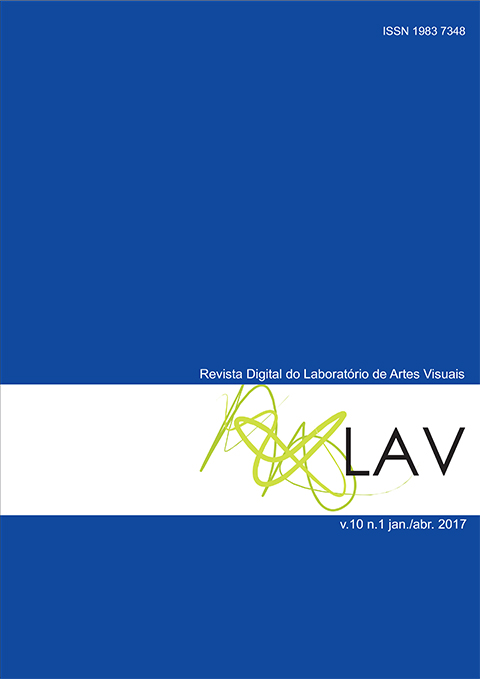Tools for self-learning in creative processes and interface prototype for audiovisual content management. The case of VertexZenit
DOI:
https://doi.org/10.5902/1983734824645Keywords:
Interface design, Free Software, Data Visualization, Audiovisual CreationAbstract
VertexZenit is a project developed at the university level teaching of Fine Arts at the University of Malaga, Spain, with an artistic long-term research component based on the programming of audiovisual behaviours, and the building of interfaces and their communication with the machine. The evolution of research shows that both technology and applied programming can be applied in different social environments through an alternative use of it. We have built our own interactive machines that can mutate according to the needs of their environment as part of the developed work. The study focuses on three thematic areas: the work of both virtual and physical design of these interfaces (for making electronic music and as auto-generated video), the participation as an element of production, and finally the possibility of a repository of collective knowledge. These three ideas are formalized through various prototypes that have been experienced in recent years and listed as general conclusions of this text.Downloads
References
ABRIL-ASCASO, Oscar; MIKAMI, Seiko. LTM: (Low-tech music). Estrabismos 2. Málaga: Centro de Ediciones de la Diputación de Málaga. 2004
BOURRIAUD, Nicolas. Estética relacional. Buenos Aires (Argentina): Adriana Hidalgo editora. 2006
CAPRA, Fritjof. La trama de la vida: una nueva perspectiva de los sistemas vivos. Barcelona: Anagrama. 1998
LÉVI-STRAUSS, C. (1966). The savage mind. University of Chicago Press.
MENKMAN, Rosa. The Glitch Moment(um). Amsterdam: Institute of Network Cultures. 2011
HARDT, M. y NEGRI, A. Multitud: guerra y democracia en la era del Imperio. Editorial Debate, 2004
JUNG, T., & OSCHATZ, S. Entwurf und Implementierung einer zeitleistenbasierten Parametersteuerung in eine datenstromorientierte Echtzeitprogrammierumgebung. Fachhochschule für Technik und Wirtschaft Berlin, 2007.
NEGRI, Toni. Arte y multitudo: ocho cartas. Madrid: Trotta, 2000
RAMIREZ, J. A. Duchamp el amor y la muerte, incluso (3a Ed.) Madrid: Siruela, 1999.
ROADS, C. Microsound. Cambridge, MA, USA: MIT Press, 2002. ProQuest ebrary. Web. 5 January 2016. MIT Press. All rights reserved. Igarss 2014.
WANG, G. The ChucK Audio Programming Language “ A Strongly-timed and Onthe-fly Environ / mentality. PhD Thesis, (September, 2008), 175. Retrieved from: http://gradworks.umi.com/33/23/3323202.html.
YOUNGBLOOD, G., & BUCKMINSTER, R. Expanded Cinema. Dutton New York, 1970.
DIEBNER, H. (n.d.). Performative Science. Retrieved September 10, 2016, from: http://performative-science.de/.
motherboard directory. (n.d.). Retrieved October 27, 2016, from: http://www.liveart.org/motherboard/01_03.html.
Pure Data — Pd Community Site. (n.d.). Retrieved September 10, 2016, from: https://puredata.info/.
vvvv - a multipurpose toolkit | vvvv. (n.d.). Retrieved September 10, 2016, from: https://vvvv.org/.
Página de Inicio - Soundcool. (n.d.). Retrieved September 10, 2016, from: http://soundcool.org/es/.
Vertex Zenit. (n.d.). Retrieved January 20, 2016, from: https://vertexzenit.wordpress.com/.






